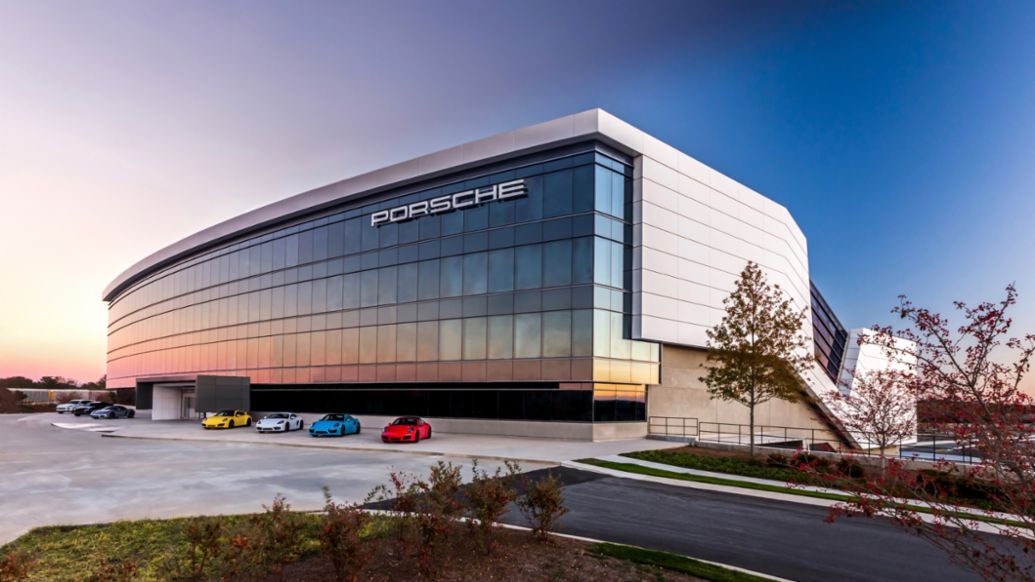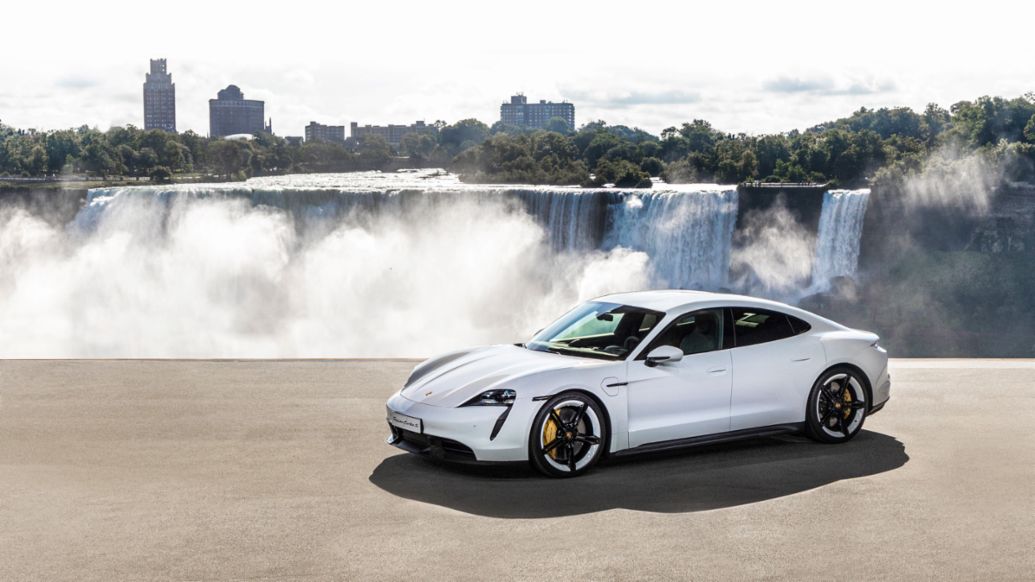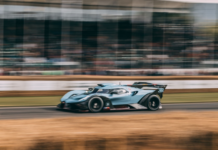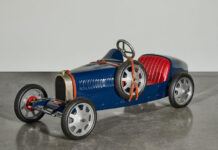In the autumn of 1950, the first Porsche sports cars arrived stateside, marking the beginning of a success story that reached new heights over the past decade.

It was autumn 1950 when a fateful meeting between Professor Ferdinand Porsche and Max Hoffman led to the decision that a fledgling German automotive manufacturer from humble beginnings would begin exporting its sports cars to America. The result was the creation of a bond stronger than anybody could have imagined, and this year Porsche is celebrating the 70th anniversary of its arrival on the American market.
The early years
The first Porsche sports car received its certification for road use in Germany on June 8, 1948, meaning the history between the brand and the U.S. goes back almost to the very beginning. Back then, the young sports car company caught the eye of a visionary New York-based salesman.
Austrian expatriate Max Hoffman had arrived in New York on June 21, 1941, and in 1947 he opened his showroom on Park Avenue, which was later redesigned by Frank Lloyd Wright. “Hoffman Motor Car Company” began importing and selling established European brands to such a degree of success that it allowed taking a chance with less-known marques.

The initial relationship between Max Hoffman and Professor Ferdinand Porsche went back to when the former was still working as a lawyer in Vienna, but the decisive contact was made years later by Max Troesch. A journalist by trade, Troesch had driven a Porsche 356 and proclaimed: “I am sure this car will make a name for itself.” When he traveled to America, he showed Hoffman photos of the car and encouraged him to connect with Porsche. The first two 1.1-litre 356 coupes were delivered to Hoffman in the autumn of 1950, and he met Ferdinand Porsche at the Paris Motor Show that same year. In early conversations, Ferry Porsche said he would be happy to sell five cars a year in America, to which Hoffman famously replied: “If I can’t sell five a week, I’m not interested.” Eventually, they agreed on a U.S. import contract of 15 cars per year.
A 1950 356 1.1-liter coupe just like the first two delivered to Max Hoffman
Building a bond
Hoffman had not committed himself to an easy task. Compared to its rivals by the numbers alone, the German newcomer was considerably more expensive and had a smaller engine, but Hoffman knew that anyone who drove a car from Zuffenhausen would understand it offered a blend of durability, track-bred agility and everyday usability that was unique in the automotive landscape.

Porsche had no budget for a major advertising campaign, so it was up to Hoffman to establish the unknown brand to American customers. His marketing materials described the 356 as “One of the World’s Most Exciting Cars” with “a new conception in handling, roadholding, suspension and safety never known before”. The strategy gained traction, and by 1954, 11 cars per week were sold through Hoffman, equalling 30 percent of the annual Porsche production. In 1965, the final year of the 356 model, the U.S. share of Porsche sales had risen to a massive 74.6 percent.
A substantial part of the growing success was thanks to another Austrian native. John von Neumann had opened his Competition Motors dealership in North Hollywood in 1948, and after a single test drive while visiting Hoffman in New York in 1951, he bought a Porsche 356 and took it back to California. An avid racer himself, Neumann played an important role in introducing the Porsche brand to the growing motorsports scene in the Golden State.

In particular, the nimble new Speedster model would prove popular with its lower starting price of just $2,995. The Speedster was inspired by the 356 America Roadster, which was in turn an example of Hoffman’s influence on the company since he had specifically asked Ferry Porsche for a lightweight, entry-level car. Neumann was also well-connected in Hollywood, and his list of celebrity customers, which included actor James Dean, helped build a strong image as the cars were used for weekend racing and weekday commuting alike.
With Porsche becoming more established in showrooms, motorsports and pop culture, the decades that followed would see a variety of changes for the brand’s presence in the U.S.. From an organisational perspective, this began with the creation of the independent distribution network, The Porsche of America Corporation, in 1955. From 1969 the company formed part of the Porsche Audi division of Volkswagen of America, Inc. and finally, on September 1, 1984, Porsche Cars North America was established in Reno, Nevada.

Approaching the new millennium, Porsche experienced setbacks and victories, both on the race track and in business. The 1990s proved to be challenging, but the introduction of the popular Boxster, which was very positively received in concept form at the 1993 Detroit Auto Show and later praised in first drive reviews, drew a new audience to Porsche and helped get sales back on track. Soon afterwards, in 1998, PCNA moved its operations to Atlanta, Georgia. The appeal of the brand expanded once again with the introduction of the Cayenne in 2003, and the sporty SUV quickly became the best-selling model in the U.S. for many years.
A decade of growth
Like most other industries, the global financial crisis of 2008 saw the automotive sector struggle at the start of the following decade. For Porsche, U. S. sales dropped below 20,000 cars in 2009 – something that had not happened since the 1990s. From that point onwards though, the sports car manufacturer did not look back: vehicle deliveries started climbing year by year, supported by new model lines – such as the Panamera, and later the Macan – and Americans’ continued fascination with the brand.
On May 12, 2011, PCNA made the major announcement that it would build a new headquarters in Atlanta. This dedicated home for Porsche in America would not only serve as a centralised location for business, but as a brand embassy where visitors could experience the thrill of everything the marque has to offer. The Porsche Experience Centre (PEC) Atlanta opened its doors in May 2015, complete with a driver development track, fine dining restaurant, Heritage Gallery and much more.

Fittingly, the first event in the new surroundings was the presentation of the 911 GTS Club Coupé, a model made specifically for the U.S. and limited to just 60 units to celebrate the 60th anniversary of the Porsche Club of America – the largest single-marque club in the world. In November 2016, a second Porsche Experience Centre opened in Los Angeles, making America the first market with two PECs and giving Porsche an even stronger presence in California – a state that accounts for about one quarter of all U.S. sales.

Combined, the two PECs represent an investment of $160 million – the largest Porsche has ever undertaken outside of Germany to date – and they have welcomed more than 450,000 visitors so far.
Alongside the expansion of the physical footprint, Porsche also started breaking new ground in the digital space, especially with the launch of the Porsche Drive subscription service in 2017. The same year would see the company reach a very special milestone with the production of the millionth example of the iconic 911, and true to history, the unique car travelled the New York streets that Max Hoffman had driven in 1950.

Reaffirming the special bond between America and Porsche, more than 81,000 people gathered at the WeatherTech Raceway Laguna Seca in California in September 2018 for four days of racing, opportunities to meet legendary Porsche racing drivers, vehicle premieres and all-round automotive enthusiasm at Rennsport Reunion VI. The festival founded and brought to life by PCNA’s former head of PR, Bob Carlson, had begun in 2001 as an engaging way to honour the Porsche motorsports legacy.

Moving towards the present day, 2019 was a pioneering year for Porsche in America in more than one sense. Sales soared to a record 61,568 vehicles and, importantly, they ushered in a new era. After the global premiere of the fully electric Taycan in September 2019, the very first deliveries in the world were to American customers in December of the same year. Seventy years after Max Hoffman introduced the sports cars from Zuffenhausen to the U.S., a new chapter is being written, and Porsche is looking ahead to many more American miles and memories.

Report by Porsche.com (first published by newsroom.porsche.com)










